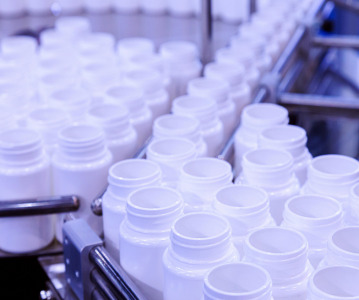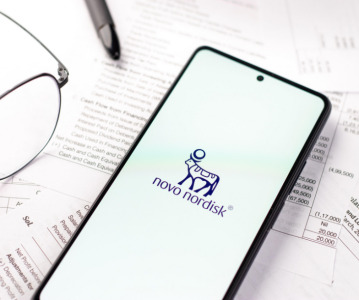3D printing: the key to unlock production of patient-specific meds?

3D printing technology has many potential advantages, such as reducing costs and speeding up manufacturing. But how suitable is it to enhancing pharmaceutical drug production?
Making personalised medicines remains a focal challenge of the pharmaceutical industry, whose techniques and technologies were originally developed to make the production of high-volume drugs economically viable.
And 3D printing, on paper at least, looks an extremely good fit for personalised medicine production, according to experts, who say traditional manufacturing methods make little economic sense for complex, low-volume drugs.
3D printing – the sequential addition of materials to form a three dimensional shape - is a potential alternative, says Nadia Tsao, principal technology analyst at market research firm IDTechEx.
“In general, if it is a small volume in each production, or a situation where the formulation is constantly changed, 3D printing will be cheaper and less time consuming,” Tsao told us.
“Traditional manufacturing methods are designed for high volume manufacturing. There are significant costs to changing a manufacturing line from making drug A to drug B. 3D printing easily addresses small volume runs and personalization.”
The right dose
Tsao cites work being carried out at the UK’s Alder Hey Children’s Hospital as an example of the value of 3D printing for the production of personalised medicines.
The hospital is using 3D printing to locally manufacture customized doses of adult drugs for children, based on a specific child’s weight (1).
Matthew Peak, co-director of the NIHR Alder Hey Clinical Research Facility for Experimental Medicine, argues that for precision medicine, the ‘right dose’ aspect has been overlooked to some degree.
“There is little point in defining the right dose for an individual if the drug is not available in a dosage form that allows that actual dose to be administered,” he explains. “This is particularly evident, for example, in paediatric practice where most drugs are still not ‘age-appropriate’ and may require modification to achieve an intended dose.”
He continues that for the high volume production of fixed dose tablets, for example, 3D printing is not ever likely to provide a competitive production method: nor has it been considered as such by the main innovators: “In my opinion, this disruptive technology is far more suited to the realms of personalised medicine in which patient-specific doses are indicated.”
Patient compliance
According to Nadia Tsao, the production of combination pills – those that contain several active pharmaceutical ingredients (APIs) – is another potential application of 3D printing.
“Another take on personalization looks at decreasing the number of pills a person takes,” she says. “This is important with the aging population, and the high incidence of chronic diseases requiring strict management. Personalization can reduce complexity by combining multiple pills. However, this type of personalization will be difficult to achieve commercially.”
This view is shared by Matthew Peak, who says another advantage is being able to 3D print oral dosage forms in a size and shape which is acceptable to an individual patient or patient group.
“For example, for patients who are unable to swallow larger tablets, it may be possible to print the required dose into a smaller sized tablet,” he says. “Similarly, in children, there are several studies which have/are exploring the optimal sizes of tablet for children of different ages. If the optimal sized tablet for children of different ages could be determined, then that would provide a framework for a flexible technology such as 3D printing to customise both the dose and in an acceptable formulation.”
Manufacturing challenges
To truly fulfil its potential in personalised medicine manufacturing, 3D printing methods and technologies will need to improve.
In February, a study (2) suggested the process of stereolithography – the use of light - causes chemical monomers and oligomers in printed layers to cross-link to form polymers can induce detrimental drug-polymer interactions.
Partly the problem is that “3D printing technologies are not exactly friendly to drug manufacturing,” Tsao says. “For example, thermoplastic extrusion requires heating up the API-containing filament to 110C. This will exclude some drugs from being manufactured this way.
“In many circumstances, 3D printing of pills is being discussed as a distributed/local means of production, for example in hospitals and pharmacies. In those cases, 3D printing technologies will need to improve their reliability and reproducibility for manufacturing, particularly as they will be run by pharmacists, not 3D printing engineers.”
But progress is being made, according to Peak, who explains that the temperature at which drugs can be printed is decreasing through technological developments.
He is of the opinion that 3D printing is really limited to oral solid dosage forms, although liquid encapsulated dosage forms can be produced: “For 3D tablets, achieving a smooth outer texture can be a problem, and this can be achieved by slower printing or coating methods.”
Complex dosage forms
To date, Aprecia’s Spritam – a formulation of the generic epilepsy treatment, levetiracetam, is the only 3D printed drug to have been approved by regulators (3).
Although Spritam is not a personalised, patient-specific product, it is complex and challenging to produce, which is why 3D printing was the best option for manufacturing, according to Jae Yoo, chief technology officer at Aprecia.
“We are most excited about developing and producing dosage forms that cannot be made by traditional processes,” he says, explaining the firm’s ZipDose formulation platform was critical to Spritam’s development and manufacture.
“Conventional processes cannot make rapidly dispersing dosage forms with high drug loads whereas binder jetting process allows controlled binding of particles needed for such structures.”
3D printing also offers the ability to create structures that enhance functionality, Yoo says.
“There are other examples where the flexibility to control geometry and composition within a shape using 3DP allows manufacture of unique dosage forms. Applications of such structures can include controlled release, precision dosing of multiple compounds, and avoiding undesirable interactions between compounds.”
“There are also cases where 3DP does not offer unique dosage forms but still provides a simpler alternative when multiple unit operations are required to achieve same function using a series of conventional techniques.”
Personal opinion
Spritam is a mass market medicine. However, Yoo also acknowledges the potential 3D printing has for complex personalized medicines.
“Current state of 3DP technologies are better suited for lower volume products,” he says. “This is due both to the current throughput of 3DP-based processes and the limited installation base.
“Combined with the existing overcapacity of conventional dosage form manufacturing machineries, it makes sense for 3DP techniques to address the products that require more frequent changeovers and customization.”
He adds that the ability to switch between products and dose strengths quickly can provide an overall operational advantage: “This becomes especially significant as batch sizes become smaller and frequent and rapid changes are required to address patient needs.”
References:
2) https://www.sciencedirect.com/science/article/pii/S2214860419314356?via%3Dihub
3) https://www.accessdata.fda.gov/drugsatfda_docs/nda/2015/207958Orig1s000Approv.pdf
Related News
-
News On Track at CPHI Milan: Thermo Fisher Scientific Track Sponsor interview
With CPHI Milan just around the corner, we sat down with some of the sponsors for this year’s conference tracks to discuss the most pressing topics in pharma. -
News Viral marketing for B2B pharma businesses: a CPHI Online case study
Discover how a Chinese chemical manufacturing company went viral on TikTok, and what their viral success means for the future of B2B digital marketing for the wider pharmaceutical industry and supply chain. -
News Sanofi to collaborate with OpenAI and Formation Bio
Pharmaceutical giant Sanofi have announced a collaboration with Formation Bio and OpenAI to build AI-powered software for accelerated drug development. -
News CPHI Online Webinar Series – Optimising Pharma Manufacturing through Digital Transformations
This month’s CPHI Webinar Series explored achieving manufacturing excellence in pharma through the digitalisation of daily processes. Presented by Joe Doyle, Head of Sales at EviView, and Bikash Chatterjee, President and Chief Scientific Off... -
News Western pharma groups warn of supply disruptions over China anti-spy law
China’s anti-espionage laws have caused concern among western pharmaceutical groups over potential arrests or denial of access for foreign inspectors in China-based facilities and manufacturing partners, posing a risk to the supply of drug produc... -
News CPHI Online Webinar Series – Innovative Strategies for B2B Pharma Marketeers
On February 20, 2024, CPHI Online hosted a webinar on Innovative Strategies for B2B Pharma Marketeers. Featuring expert speakers from across the pharmaceutical value chain, this webinar delves into how B2B pharma marketeers can create better content to... -
News 2024 Pharma Industry Trends Outlook: Collaboration, Market Maturity, and Digital Futures
The annual CPHI Online 2024 Pharma Trends Outlook, in partnership with Arvato Systems, identifies 12 key industry trends shaping the life sciences industry in the coming year. -
News New Novo Nordisk AI hub for drug discovery to open in London, UK
Danish pharmaceutical giant Novo Nordisk will be opening an AI-based research facility in the heart of London to advance drug discovery operations.
Position your company at the heart of the global Pharma industry with a CPHI Online membership
-
Your products and solutions visible to thousands of visitors within the largest Pharma marketplace
-
Generate high-quality, engaged leads for your business, all year round
-
Promote your business as the industry’s thought-leader by hosting your reports, brochures and videos within your profile
-
Your company’s profile boosted at all participating CPHI events
-
An easy-to-use platform with a detailed dashboard showing your leads and performance


.png)
.png)
.png)
.png)

